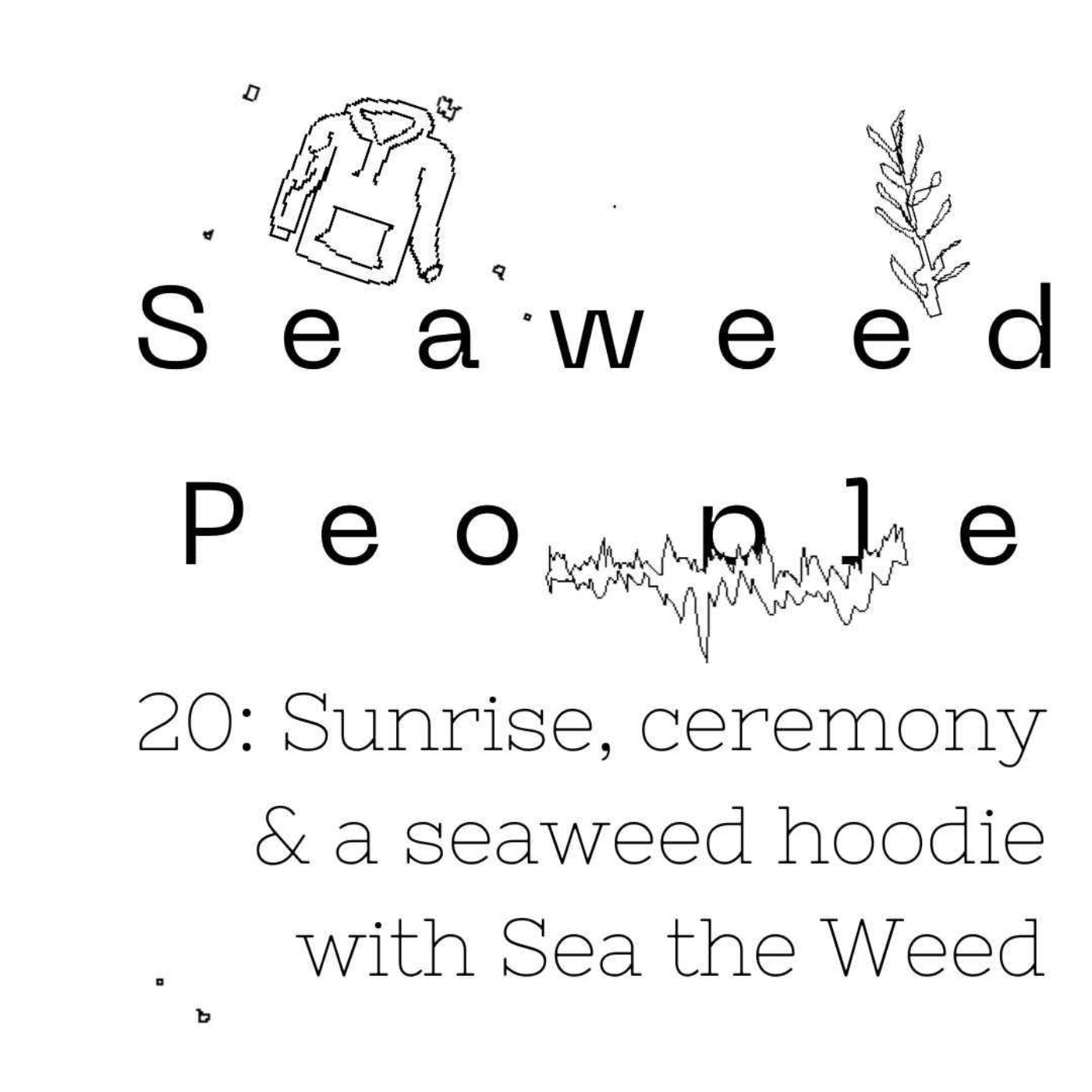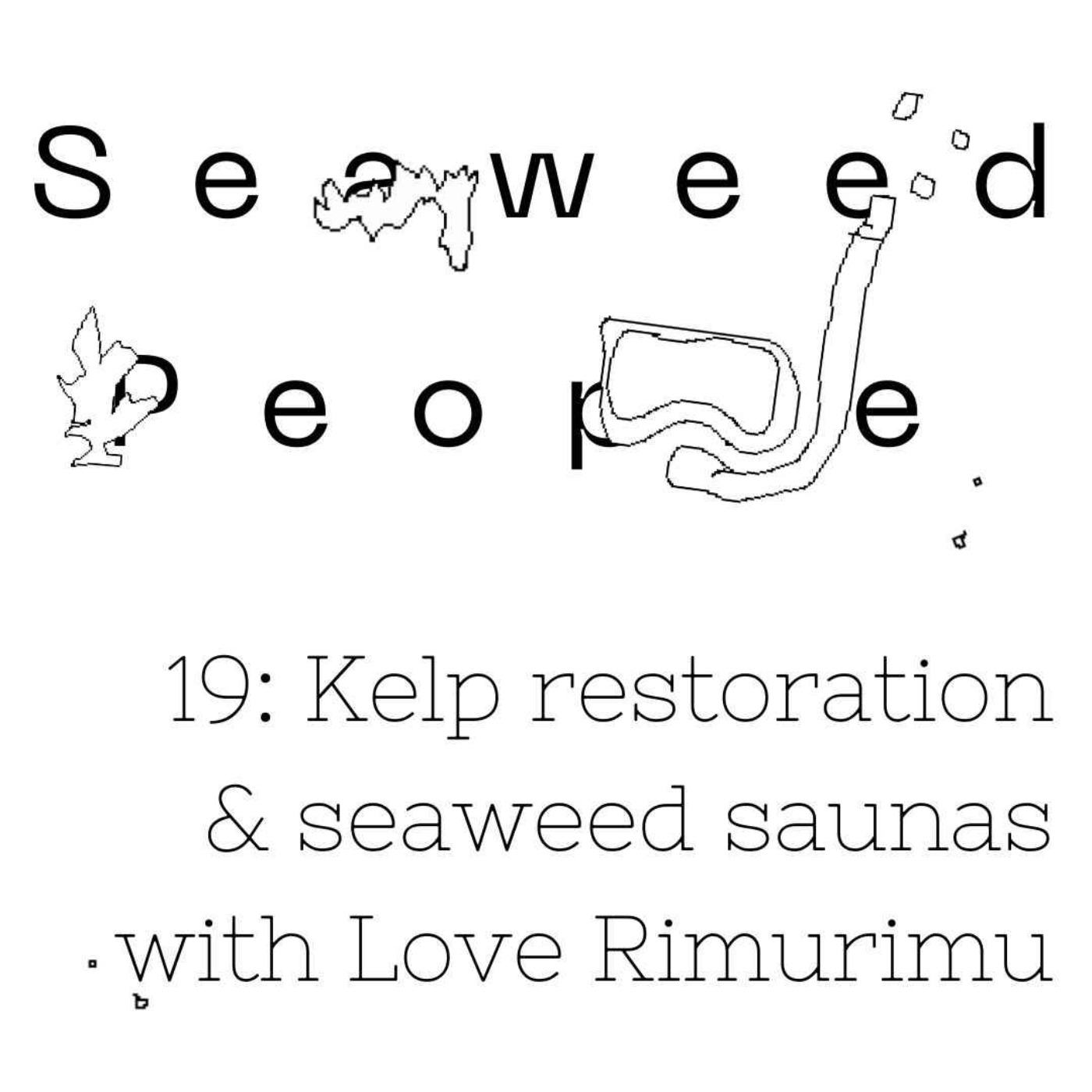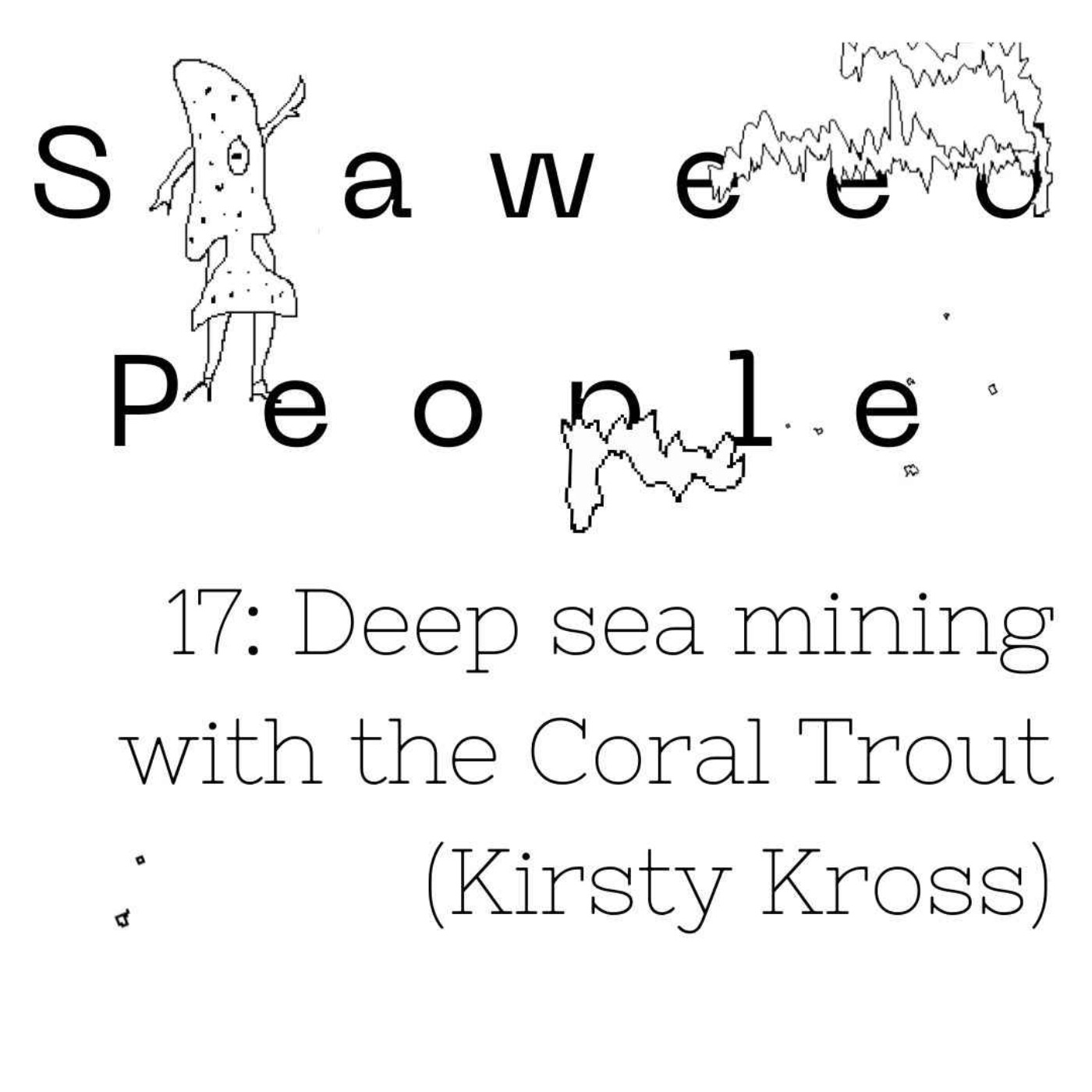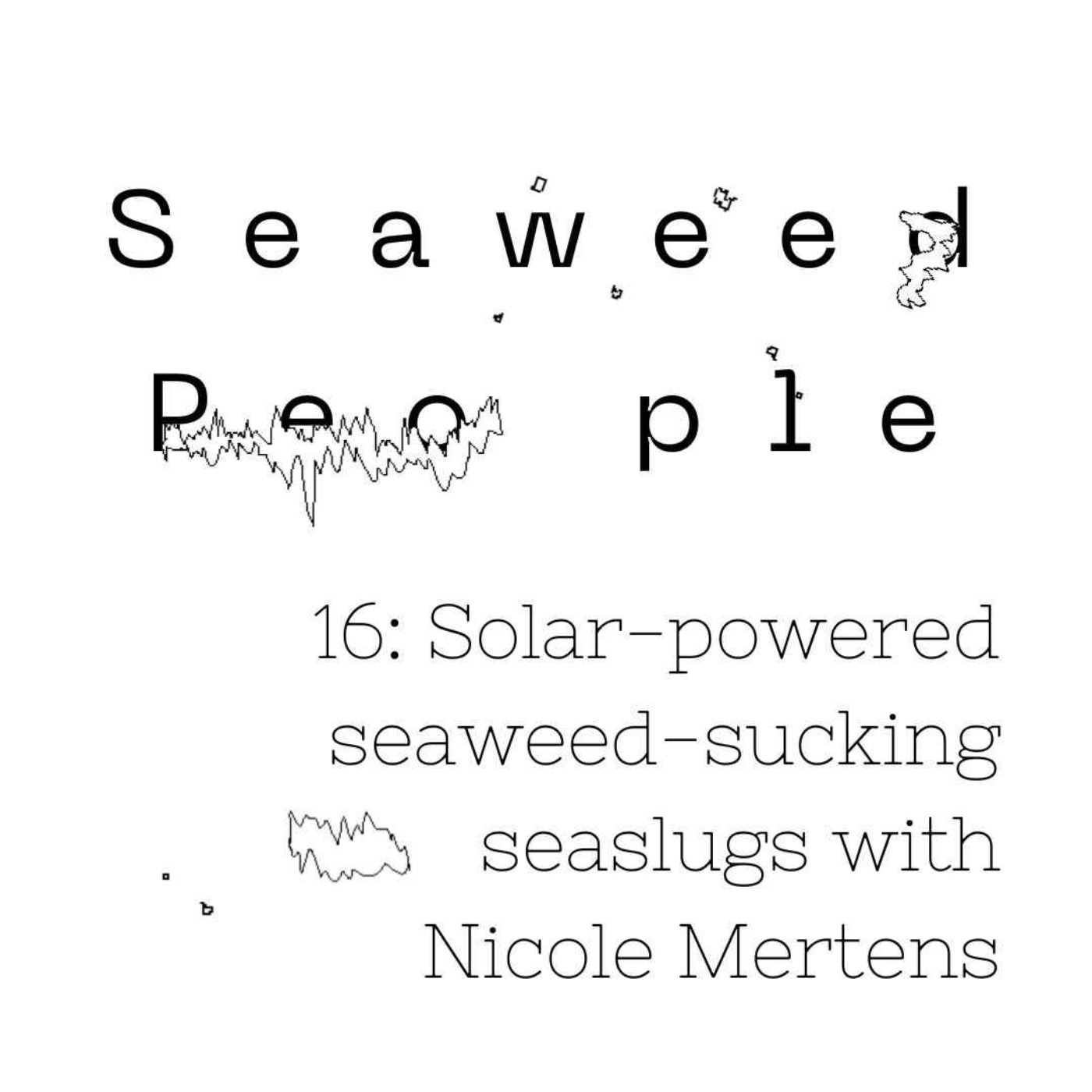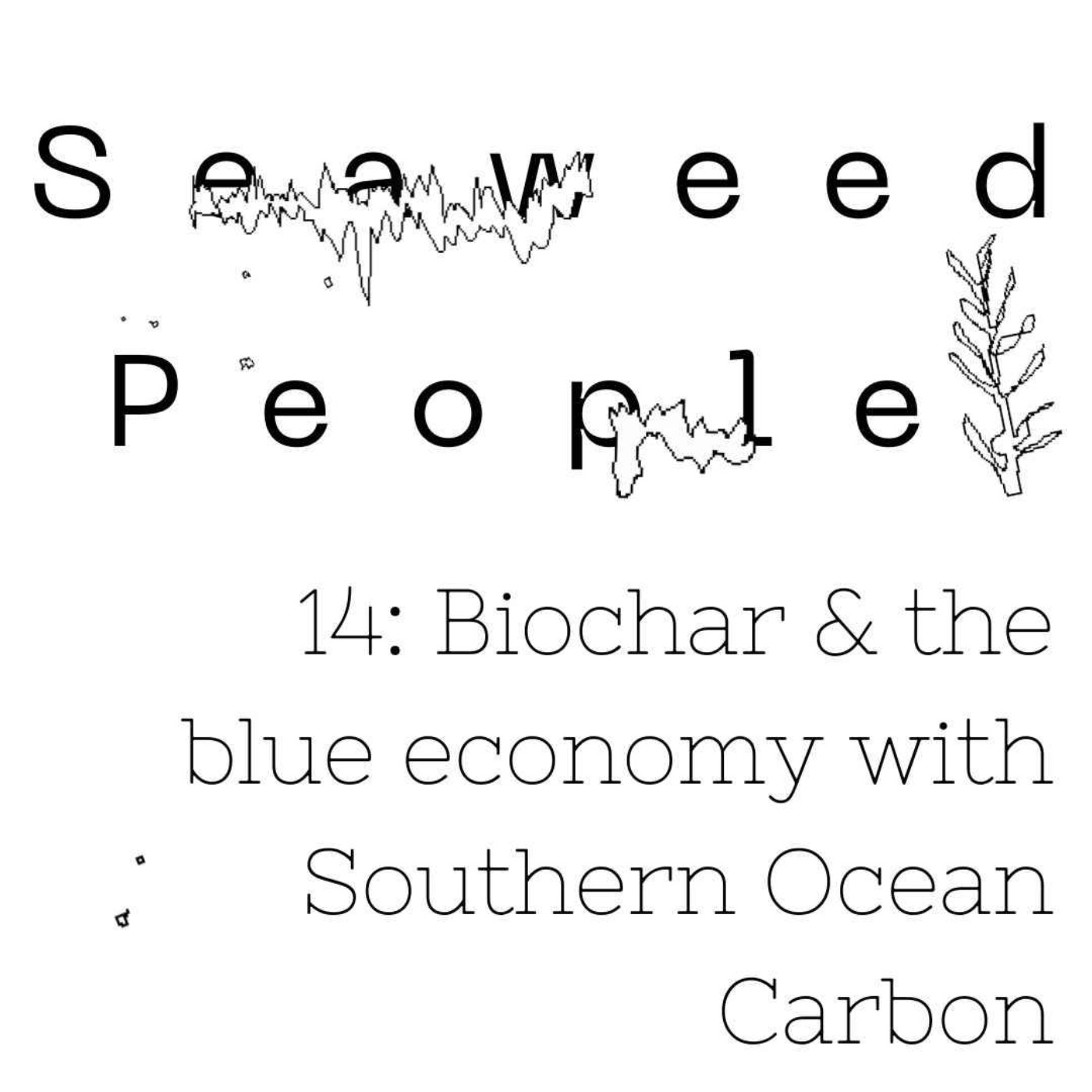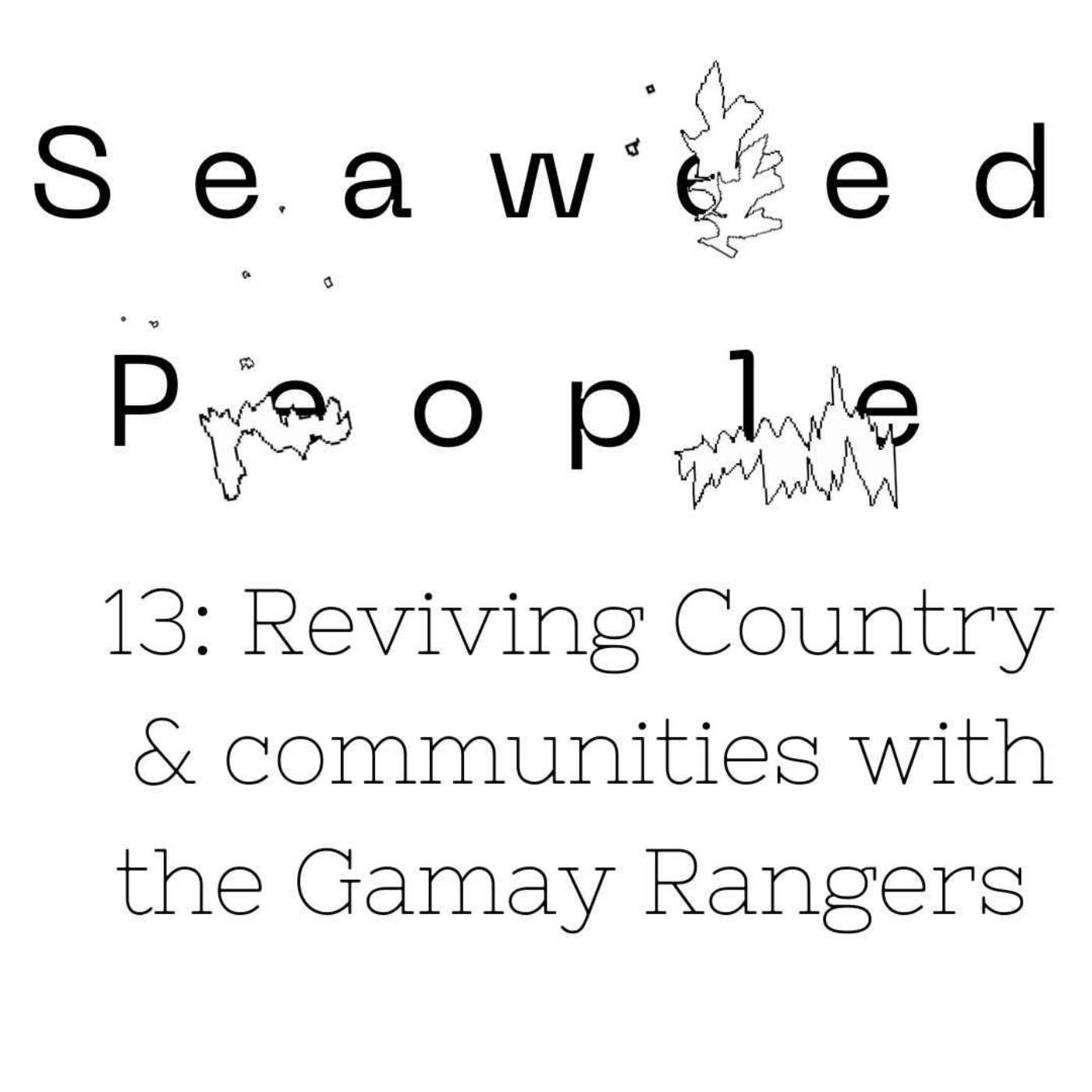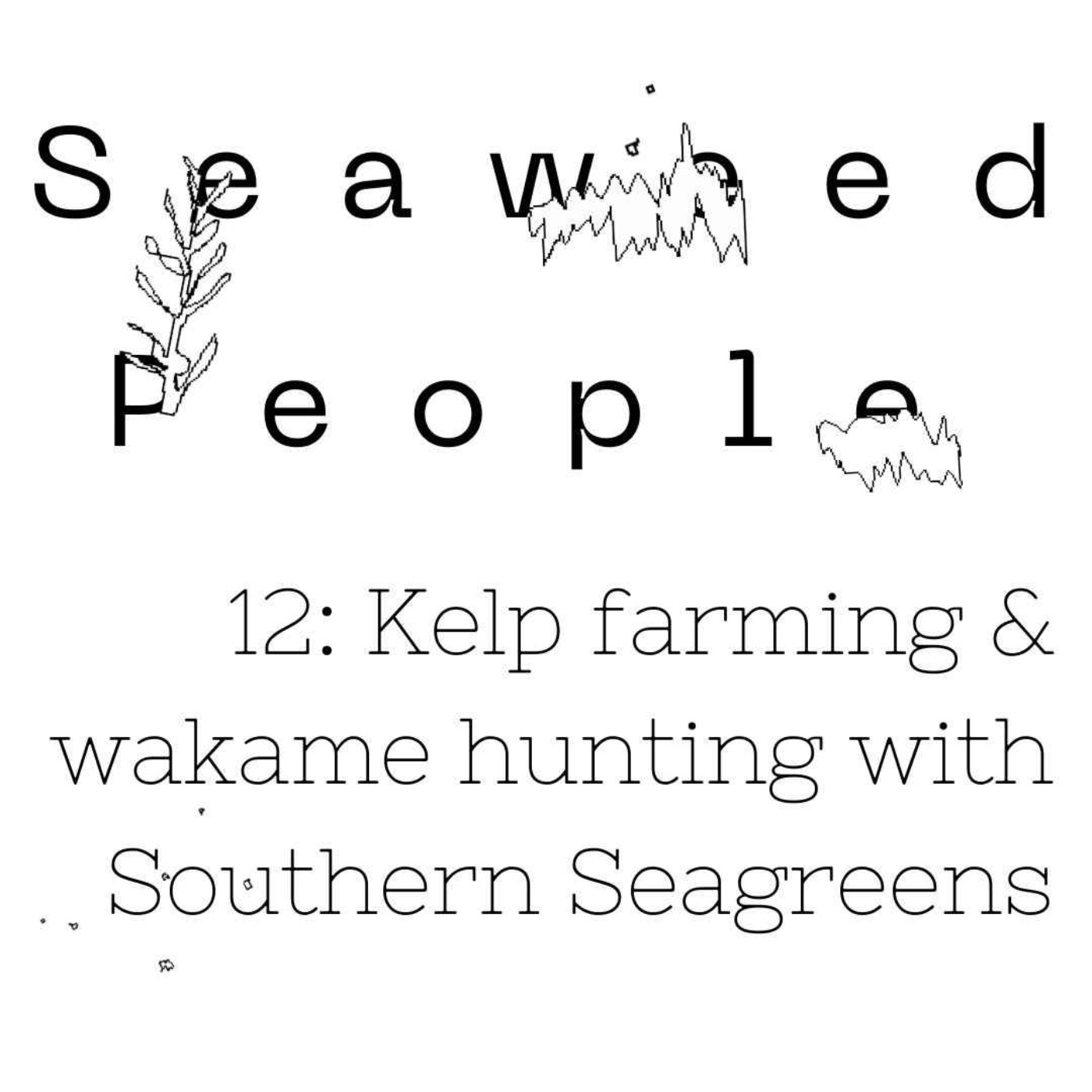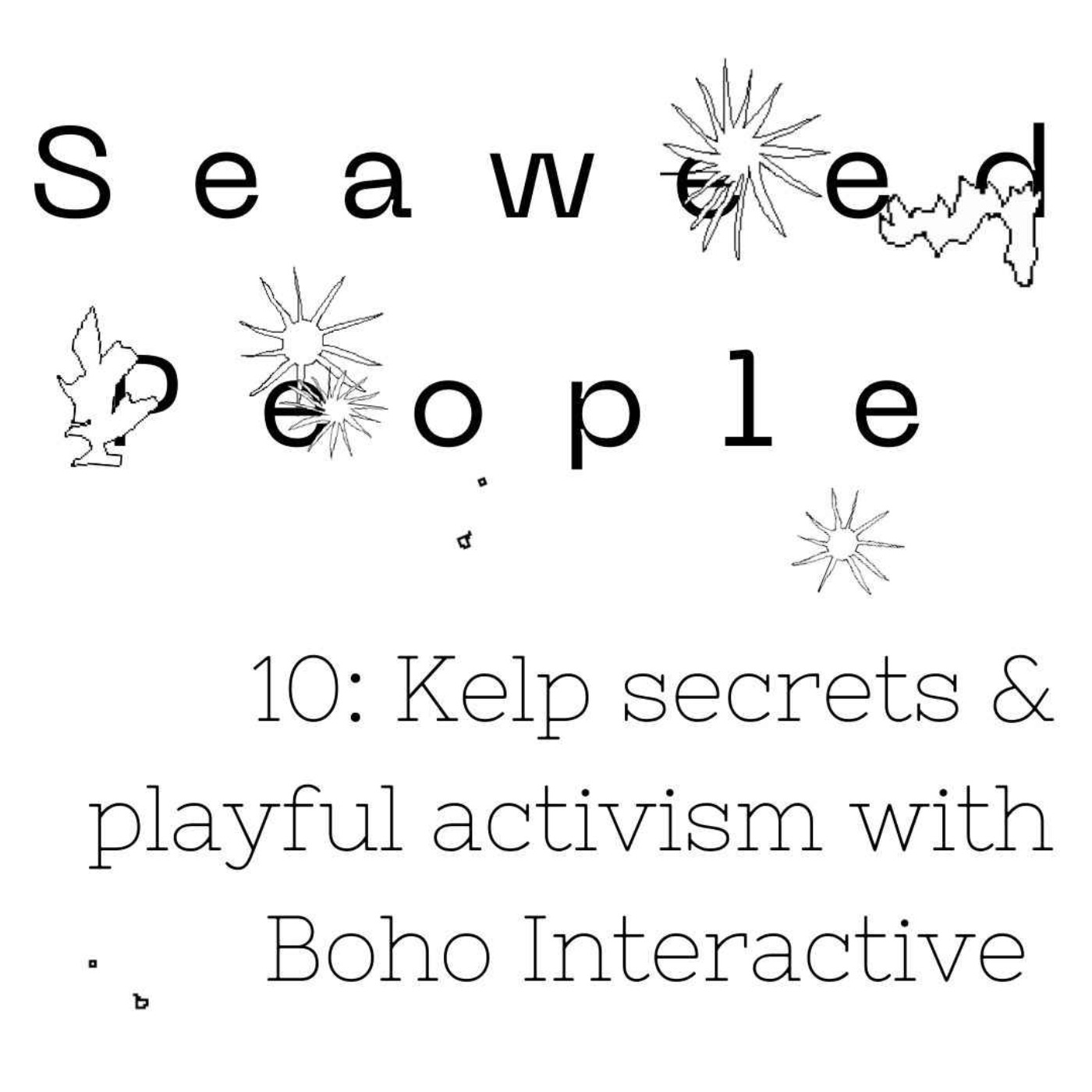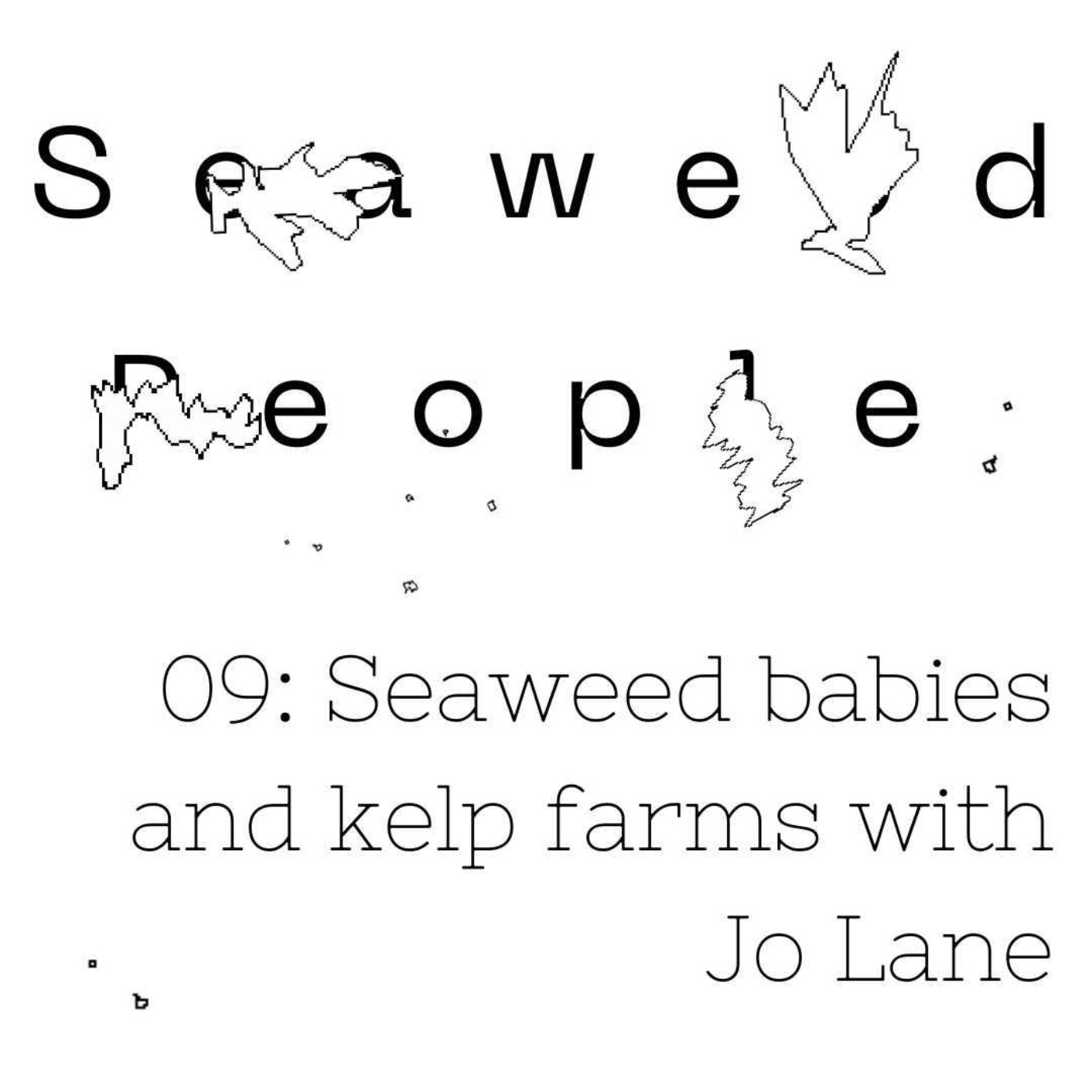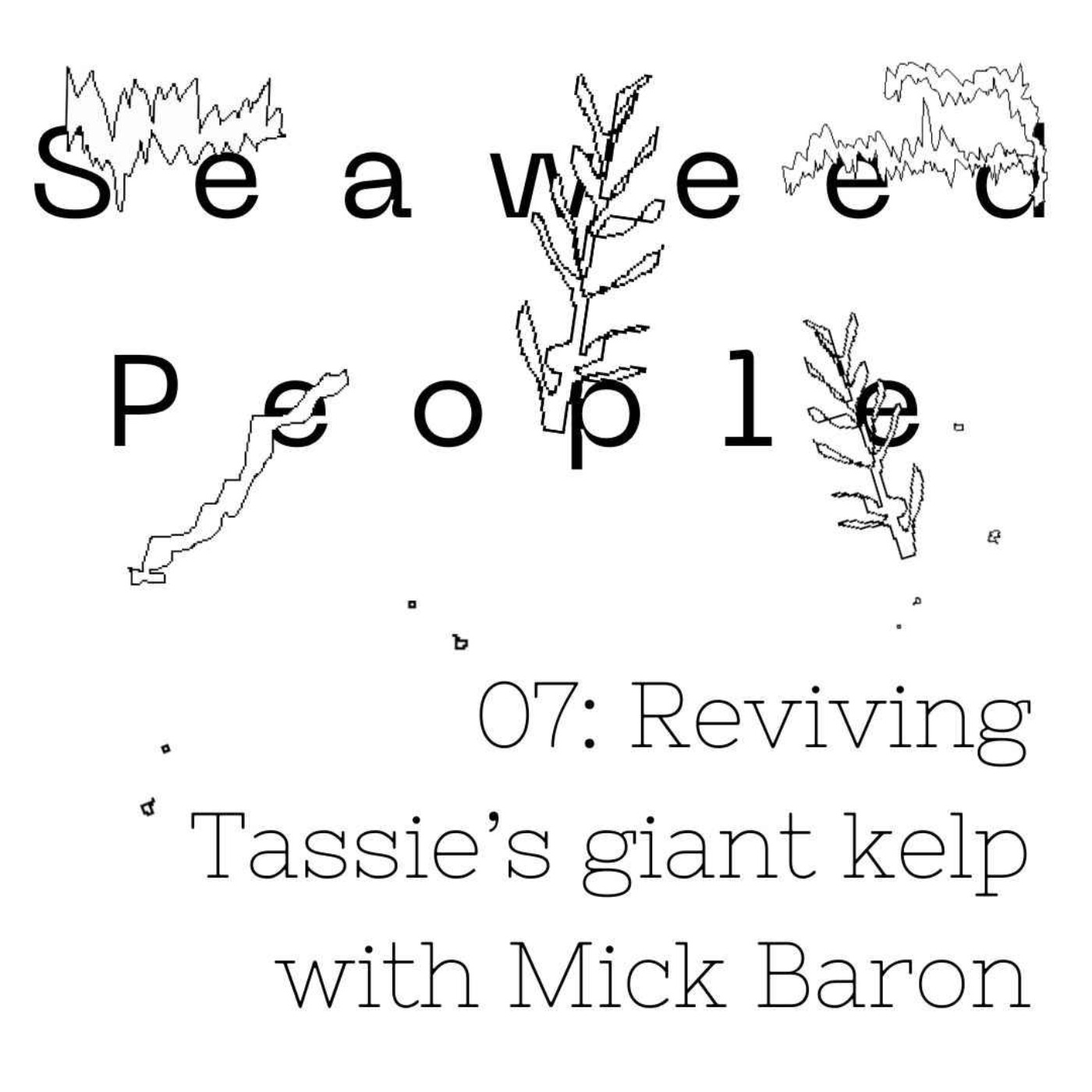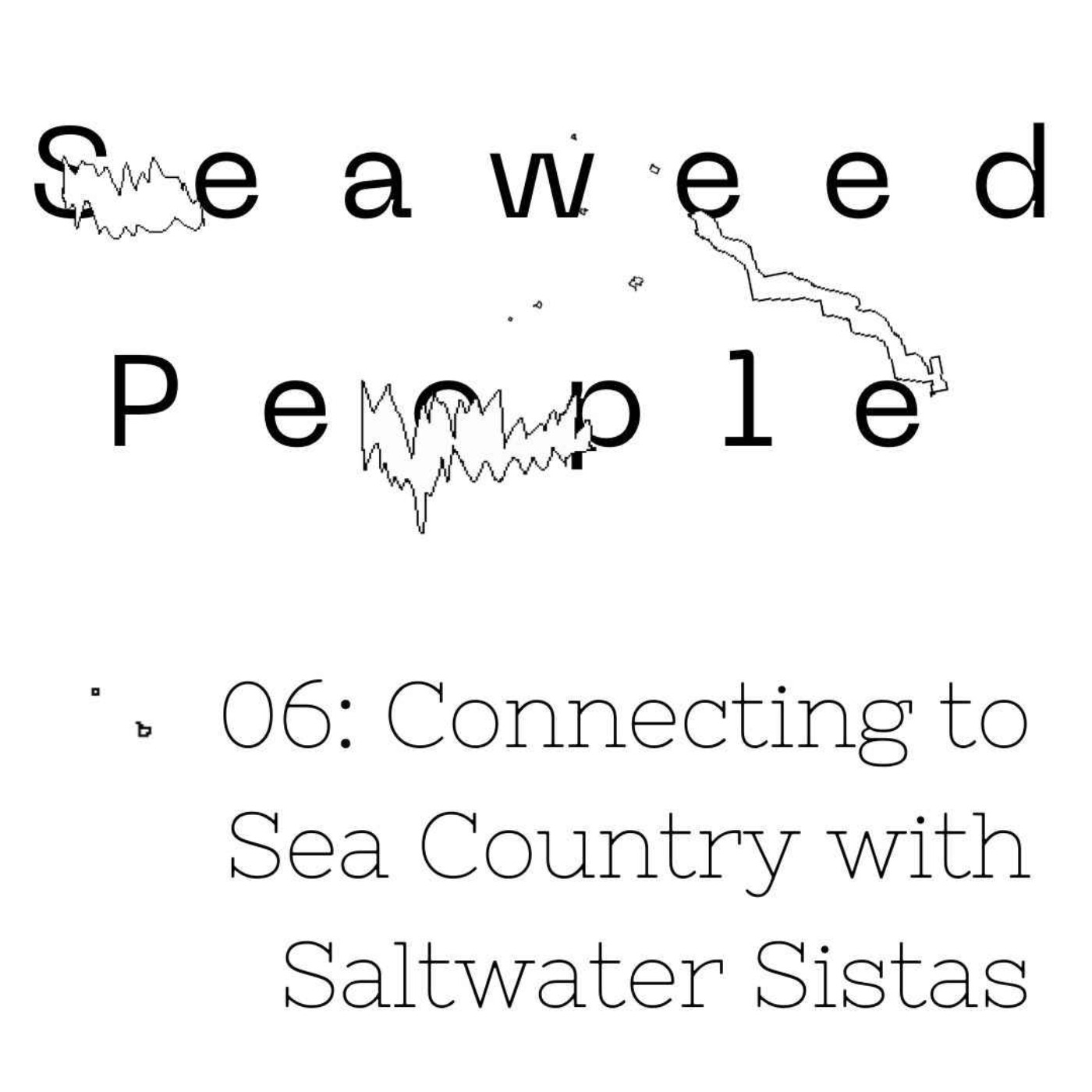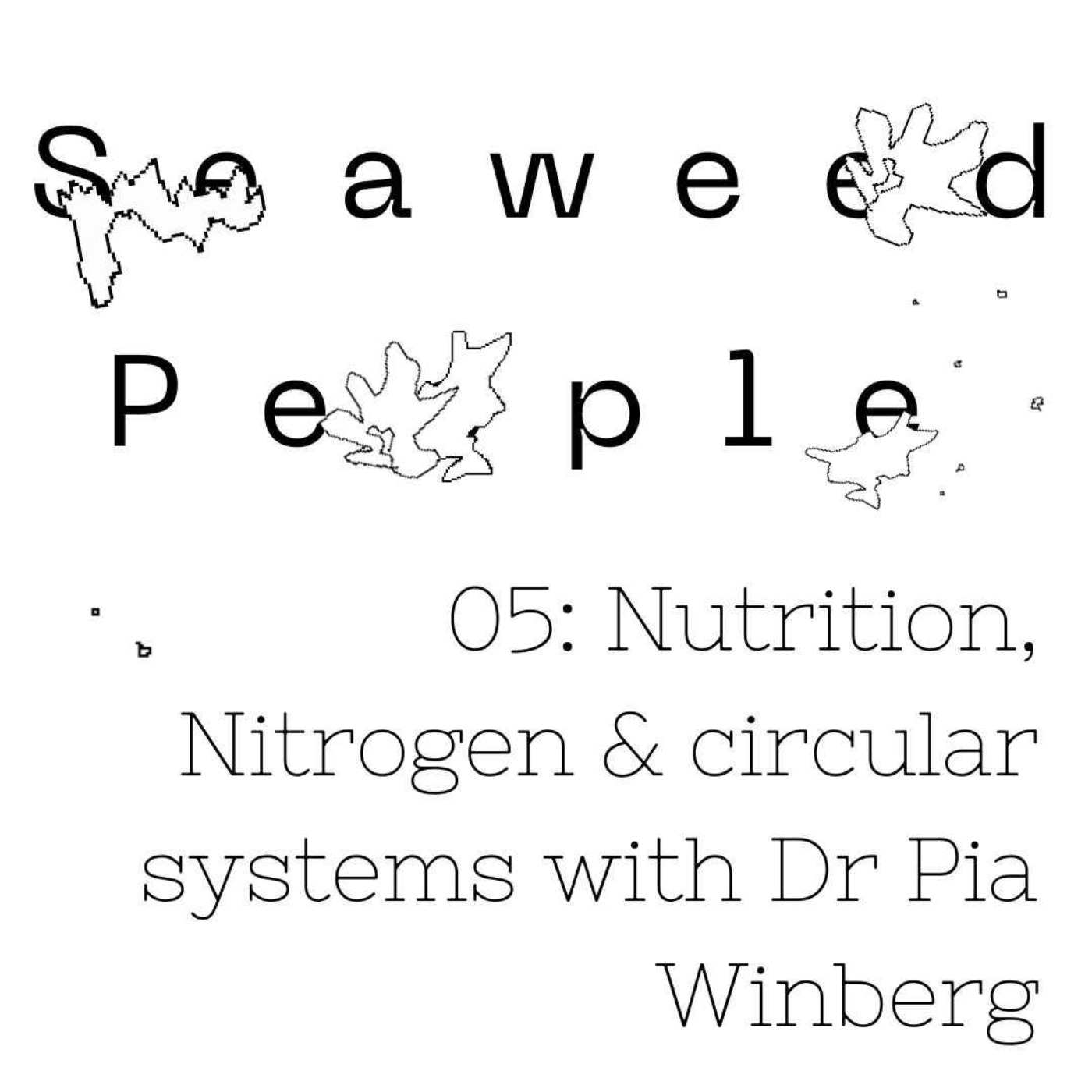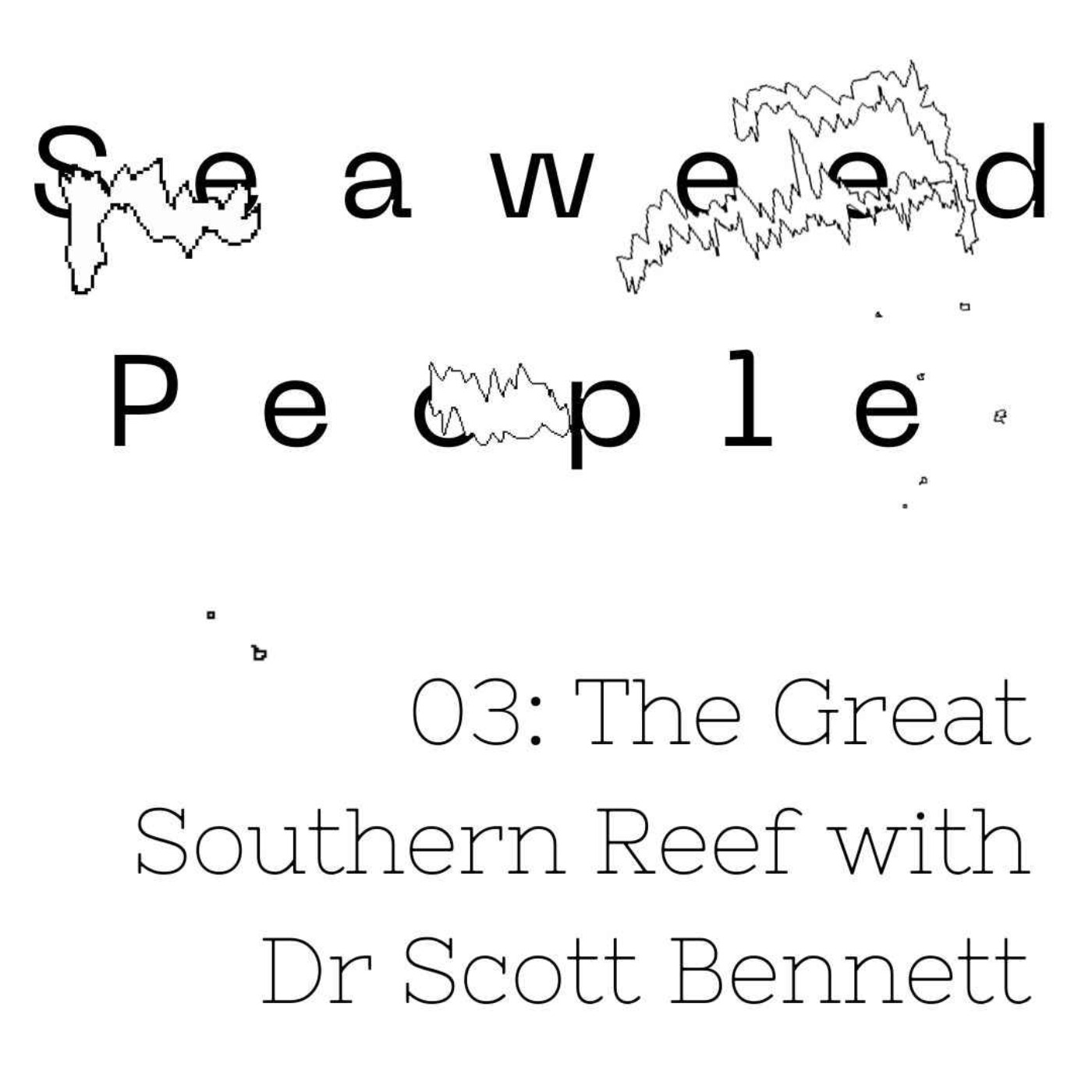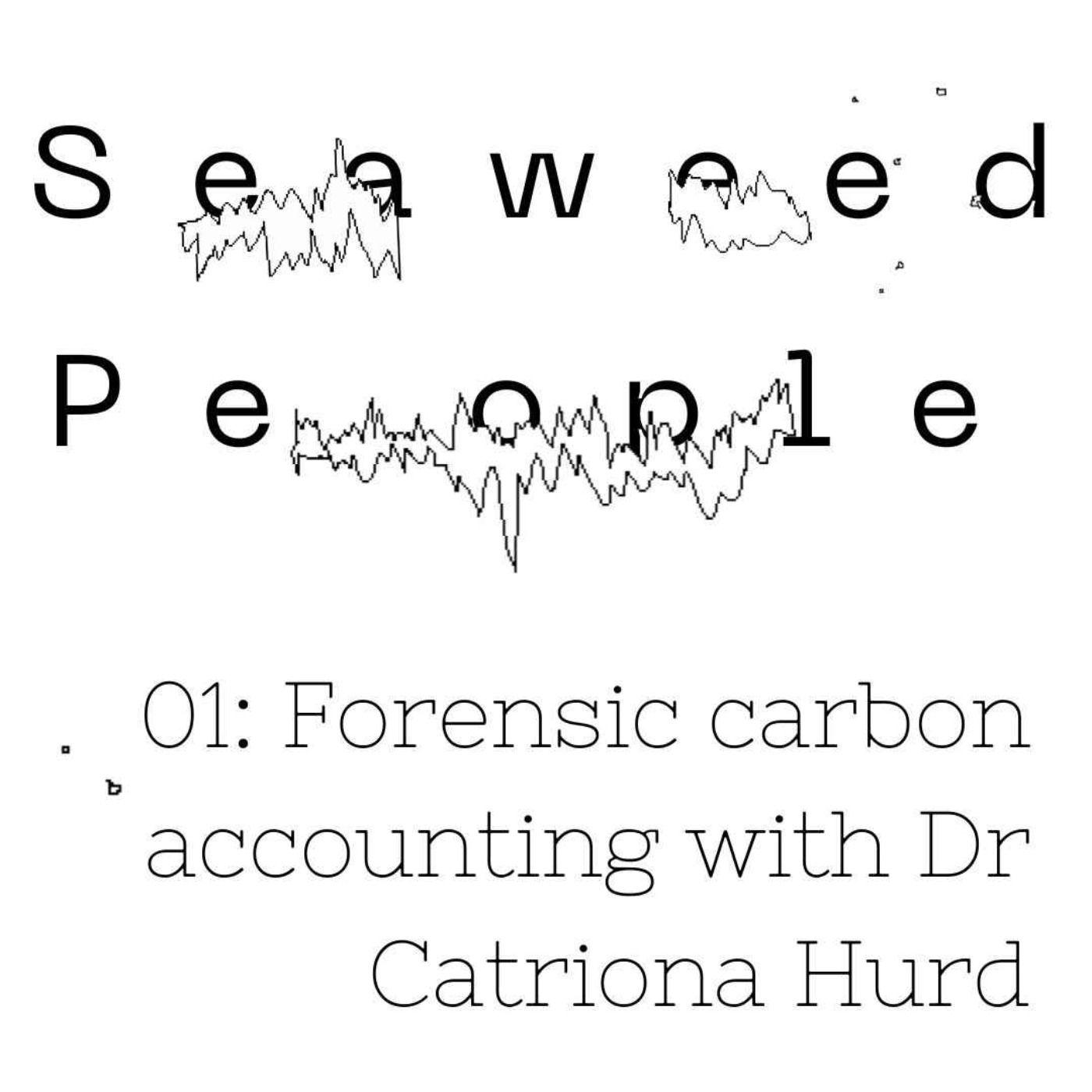Discover Seaweed People
Seaweed People

Seaweed People
Author: Jess Hamilton
Subscribed: 3Played: 27Subscribe
Share
© Jess Hamilton
Description
A podcast about seaweed and people. It's for you if you're interested in what seaweed is, how it works in ecosystems, growing it for food or climate solutions, regenerating coastlines and the intersection of science, art and culture.
Seaweed People is independent - support the show at buymeacoffee.com/seaweedpeople.
Follow on socials @seaweed.people 🌱🪸
Hosted on Acast. See acast.com/privacy for more information.
21 Episodes
Reverse
This one’s for early risers and big dreamers, those of you into kelp restoration fans, clothes made of seaweed, imagination, snorkelling and a fire by the beach, if you’re interested in how Indigenous Knowledges and ceremony can connect coastal communities, or how corporates can invest in the ocean 🌅🧶Sea the Weed is a collaboration of organisations reforesting 70 hectares of once destroyed Phyllospora Comosa ('Crayweed') along Sydney’s coastline. Throughout 2025, friends Arthur Little and Brenden Newton from AIME have been running a monthly program of sunrise, ceremony and seaweed, drawing human attention back to nature and ‘looking sideways’. We recorded this one at Malabar beach, after a beautiful swim with the reforested crayweed. Find dates and more info on the AIME website here. You can find and contact me @seaweed.people. Donate to support the making of this show at buymeacoffee.com/seaweedpeople. Also, listen to my new project, SOIL: Rewilding the Underground made with Freya Mulvey here. Links to other stuff in this ep: AIME - mentoring & the Imagi-Nation hubOperation Crayweed (also listen to episode 2 with Adriana Verges)Abyss Scuba DivingMaking a Hoodie Podcast with Sea the Weed The Grey Space podcast with Brenden NewtownAIME’s Imagine filmThe seaweed hoodie (+ the Regenerators website)PYRATEX innovative textiles Seaweed fabricBecome a shareholder of the ocean (deck)This episode was recorded and produced on Gadigal & Bidjigal Country. I acknowledge and pay respects to First Nations people and their elders past and present as the ongoing custodians of Sea, Land and Sky Country. Hosted on Acast. See acast.com/privacy for more information.
You are going to love this conversation if you dream of spending a week greeting the sun with seaweed songs, having seaweed baths after saunas, if you’re into seaweed tattoos, if you’re a student or a teacher and you wanna go diving, and generally if you’re into the idea of regenerating underwater forests 🤿🛀🏽Along with the team and communities behind Love Rimurimu, Zoe Studd is doing all of these things. Zoe is the Co-Founder and Executive Director of Mountains to Sea Wellington Trust, where she manages both marine and freshwater education programs and citizen science programs, working with schools and communities in Aotearoa New Zealand. We talk about starting kelp restoration projects in schools, regenerating coastlines with science and cultural knowledge, and running a kickass seaweed festival. Follow the Love Rimurimu project here and on their socials. You can find and contact me @seaweed.people. Donate to support the making of this show at buymeacoffee.com/seaweedpeople.Links to other stuff in this ep: Seaweeds of Wellington (video ID)Mountains to Sea WellingtonExperiencing Marine Reserves community programNew Zealand approves first special permit to remove kina barrensProject Baseline WellingtonKelp Forest Alliance website (or listen to Episode 11 with Aaron Eger)Green Gravel GroupLove Rimurimu’s Seaweed Restoration ToolkitSeaweed Fest 2025Hot tubs, seaweed soaks & saunas in IrelandThis episode was recorded and produced on Gadigal Country. I acknowledge and pay respects to First Nations people and their elders past and present as the ongoing custodians of Sea, Land and Sky Country. Hosted on Acast. See acast.com/privacy for more information.
This episode is for you if you’re wondering what the heck is going on across the sea for our friends in the US, if you’re into citizen science and communities coming together to protect kelp, and if you like a good ocean film 🌊🍿Blue Frontier is a US-based organisation that’s been building solution-oriented citizen engagement for 20 years, to protect oceans, coasts and the human and wild communities that depend on them. We’re joined by Blue Frontier’s David Helvarg and Natasha Benjamin to talk about people-powered conservation, the seaweed rebellion and their new film Sequoias of the Sea, which documents a community of fishermen, tribes and scientists working to restore a kelp habitat devastated by a warming climate.Find out more about Blue Frontier here and follow the film Sequoias of the Sea here. You can find and contact me @seaweed.people. Donate to support the making of this show at buymeacoffee.com/seaweedpeople.Links to research, projects and stories touched on in this ep: Sequoias of the Sea film (US)Blue Frontier - websiteRising Tide - Blue Frontier’s podcastJared Huffman (“Kelp Congressman”)White Rock film by the Great Southern Reef Foundation (Australia)The Australian Urchin Taskforce The Golden Shore: California’s Love Affair with the SeaKelp Forest ChallengeThe Seaweed RebellionThis episode was recorded and produced on Gadigal/Wangal Country. I acknowledge and pay respects to First Nations people and their elders past and present as the ongoing custodians of Sea, Land and Sky Country. Hosted on Acast. See acast.com/privacy for more information.
This one’s for you if you’re an artist, or a scientist or conservationist wanting to communicate in creative ways, and if you love the deep sea, the Great Barrier Reef and Kate Bush 🪸💎Kirsty Kross is an eco-feminist Australian artist currently based in Oslo, Norway, whose work is about finding ways of connecting diverse groups with issues around the climate crisis, often by embodying a vibrant coral trout. We talk about deep sea mining, mesopotamian deities, which countries are two-tit countries and a seaside collaborative opera performance 📣🪼You can find Kirsty at her website or on Instagram @kirstykrosss. You can find and contact me @seaweed.people. Donate to support the making of this show at buymeacoffee.com/seaweedpeople.Deep sea mining links & stories touched on in this ep: Greenpeace AU petition to ban deep sea mining ahead of international ISA meeting in July 2025Pacific Blue petition to ban deep sea mining Blue Peril short film New battleground in critical minerals race is on Australia’s doorstepWhat We Know About Deep-Sea Mining — and What We Don’t Analysis of the implications of deep seabed mining for the global biodiversity framework and the sustainable development agenda (WWF report)Immortal jellyfish! National Treasure at Woollahra Gallery, RedleafThe Cult of Atargatis and Transgender PriestessesJack Halberstam on Queer Failure, Silly Archives and the WildThis episode was recorded and produced on Gadigal/Wangal Country. I acknowledge and pay respects to First Nations people and their elders past and present as the ongoing custodians of Sea, Land and Sky Country. Hosted on Acast. See acast.com/privacy for more information.
This one’s for you if you’re into nudibranchs, sea grapes, solar power, butterflies, citizen science and tongues with teeth(!?) 🌱🐛Nicole Mertens is a marine ecologist with a passion for sacoglossans, a science communicator and the Nature Stewards Coordinator with the Victorian National Parks Association. Nicole is passionate about using citizen science as a platform for evidence-based conservation, and helping people connect with their local environment. You can find Nicole and the VNPA team here and on socials @vicnationalparks. You can find and contact me @seaweed.people. Donate to support the making of this show at buymeacoffee.com/seaweedpeople.Links to research, projects and stories touched on in this ep: Seaslug census Facebook group (Australia)iNaturalist - sacoglossans of Victoria (good pics)Nudibranchs - videos + freaky factsShaun the Sheep internet famous nudiKeep your head: the self-decapitating sea slugs that regrow their bodies – hearts and allSolar-powered sea slugs VNPA ReefWatch citizen science programsThis episode was recorded and produced on Gadigal/Wangal and Larrakia Country. I acknowledge and pay respects to First Nations people and their elders past and present as the ongoing custodians of Sea, Land and Sky Country. Hosted on Acast. See acast.com/privacy for more information.
This one’s for you if you’re interested in how a class action case works, if you wanna hear about seaweed farmers taking on big oil companies or if you’re also a soil person 🌱🪱Freya Mulvey is a senior lawyer and environmental enthusiast who is passionate about implementing better soil and landscape regulation into policy and legal frameworks. She is a 2023 Churchill Fellow and a 2017 recipient of the Australian Lawyers Alliance Civil Justice Award for her work on the Montara Oil Spill. She is also a published author of the book Ground Breaking: Soil Security and Climate Change. We're also making a podcast together! You can find Freya on LinkedIn, subscribe to SOIL on Spotify here, find us on socials @soilpodcast or read more at thesoilpodcast.com. Donate to our Pozible campaign by March 16th or via our website afterwards. You can find and contact me @seaweed.people. Links to research, projects and stories touched on in this ep: Indonesian seaweed farmers win class action over one of Australia's largest oil spillsInterview with Greg PhelpsPhil Mulvey, Environmental Earth Sciences InternationalGround Breaking: Soil Security & Climate Change (the book Freya co-authored with Phil Mulvey)SOIL - Pozible campaignSoil on SpotifySeaweed People is completely independent. You can support the making of this show at buymeacoffee.com/seaweedpeople.This episode was recorded and produced on Gadigal/Wangal and Larrakia Country. I acknowledge and pay respects to First Nations people and their elders past and present as the ongoing custodians of Sea, Land and Sky Country. Hosted on Acast. See acast.com/privacy for more information.
This one’s for you if you’re interested in biochar, giant kelp, marine engineering or thinking about seaweed as a solution to a whole lotta problems 🛠️🐟Adam Brancher is a Principle Marine Surveyor and the Founder of Southern Ocean Carbon (now known as Next Wave Seaweed), which aims to mitigate the impacts of climate change through responsible seaweed mariculture and bio-mitigation around aquaculture farms. We touch on a few of the exciting projects his team is working on across the world in this episode, such as growing seaweed for bioplastics, offshore mariculture, IMTA and seaweed for food security. Since this ep was recorded SOC has rebranded to Next Wave Seaweed - you can find them here or on socials @nextwaveseaweed. You can find and contact me @seaweed.people. Donate to support the making of this show at buymeacoffee.com/seaweedpeople.Links to research, projects and stories touched on in this ep: The Problem with Carbon Credits and Offsets ExplainedForensic carbon accounting with Catriona Herd (SP episode)Opportunities and constraints for biochar technology in Australian agriculture: looking beyond carbon sequestration (research)Kelpy (NSW-based seaweed bioplastic)Nopla - bioplasticsBlue Economy CRCHydrodynamic energy attenuation by seaweed aquacultureDeveloping Production Systems for Offshore Kelp MaricultureA new paper on seaweed explores its potential in nourishing low- and middle-income nationsSome info on IMTA (integrated multi-trophic aquaculture)Nutrition, Nitrogen & circular Systems with Pia Winberg (SP episode)This episode was recorded and produced on Gadigal/Wangal and Palawa Pakana lands. I acknowledge and pay respects to First Nations people and their elders past and present as the ongoing custodians of Sea, Land and Sky Country. Hosted on Acast. See acast.com/privacy for more information.
You’ll love this ep, I just know it 🐋🦅 It’s for you if you like baby seahorses and migrating whales, if you live in a coastal city, if you've heard about wildlife coming back into harbours during lockdowns, or if you want to know what a strong collaboration between Indigenous knowledge-holders and western science looks like. Robert Cooley is a Senior Ranger and leader of the Gamay Rangers, an Indigenous ranger team that cares for country on Gamay, or Botany Bay in Sydney, and on conservation land owned by the La Perouse Local Aboriginal Land Council. Since 2019, the Gamay Rangers team have been regenerating coastal habitats, protecting marine mammals, providing food for vulnerable people during Covid lockdowns and connecting local communities to Sea Country in Australia’s biggest city. You can find Robert and the Gamay Ranger team on socials @gamayrangers. You can find and contact me @seaweed.people. Donate to support the making of this show at buymeacoffee.com/seaweedpeople.Links to research, projects and stories touched on in this ep: La Perouse Local Aboriginal Land CouncilOperation Crayweed - restoring Sydney’s underwater forests Operation Posidonia - healing old wounds The Sydney Seahorse Project (SIMS/Gamay Rangers)SIMS Aboriginal Youth Ranger Program Wild Sydney Harbour - citizen science project Country Needs People - what are Indigenous Rangers?Indigenous Rangers (NIAA/gov)This episode was recorded and produced on Gadigal/Wangal and Bidjigal lands. I acknowledge and pay respects to First Nations people and their elders past and present as the ongoing custodians of Sea, Land and Sky Country. Hosted on Acast. See acast.com/privacy for more information.
This one’s for you if you’re into craft beer, you like dreaming up side hustles with your mates, you’re a chef wanting to experiment with kelpy umami or if you’re an aspiring seaweed farmer 👩🏽🍳🍻Cam Hines and Brent “Bert” Cross are two of the three founders of Southern Seagreens. From backgrounds in craft beer and naval diving, they joined forces with Rob (the third, a scientist) to learn how to farm native kelp at their sea farm down in Flinders, Victoria. They also hunt wakame, one of the world’s most invasive (yet delicious) species, and turning it all into tasty treats. You can find Cam & Bert via the Southern Greens website or socials. You can find and contact me @seaweed.people. Donate to support the making of this show at buymeacoffee.com/seaweedpeople.Links to research, projects and stories touched on in this ep: AU government Invasive pests: Wakame control plan Removing wakame (Parks Victoria)Mountain Goat BeerAegir Divers (Bert’s company)GreenWave - global network of regenerative ocean farmersReviving Tassie’s giant kelp with Mick Baron (SP companion episode about Macrocystis)Seaweed babies & kelp farms with Jo Lane (another companion ep about Ecklonia radiata)An Overview of the Alternative Use of Seaweeds to Produce Safe and Sustainable Bio-Packaging (Lomartire et al., 2022 - research)This episode was recorded and produced on Gadigal/Wangal land and Boon Wurrung/Bunurong land. I acknowledge and pay respects to First Nations people and their elders past and present as the ongoing custodians of Sea, Land and Sky Country. Hosted on Acast. See acast.com/privacy for more information.
This is maybe as seaweed peopley as it gets. It’s for you if you want an overview of kelp forests, if you’re into rewilding and sea otters, if you have any kind of skill and want to put it toward conserving kelp, if you like the sound of a national marine gardening day or if you just want to hear about a big, impressive enviro movement 🦦⚡Aaron Eger is the Founder and Program Director of the Kelp Forest Alliance, a global community of kelp restoration and conservation practices and research that evolved from his PhD. He was the lead author of the first ever kelp restoration guidebook and facilitated the creation of the Kelp Forest Challenge, a global mission to protect and restore 4 million hectares of kelp forests by 2040.You can find Aaron at UNSW or via the Kelp Forest Alliance website. You can find and contact me @seaweed.people. Support the show at buymeacoffee.com/seaweedpeople.Links to stuff we talk about: Sunshine Coast Canada - Kelp ecosystem restoration Sea Otters Have Helped Bolster California’s Kelp ForestGlobal Rewilding AllianceGlobal kelp forest restoration: past lessons, present status, and future directions (Eger et al., 2022)The Race to Help Kelp (Google resource. Great pics)Kelp Restoration GuidebookKelp Forest Challenge The Kelp Forest Challenge: A collaborative global movement to protect and restore 4 million hectares of kelp forests (open access)Korean Kelp Restoration ManualGardening Marine Forests (film) - South Korean kelp restorationTips for finding & contacting your local MP (courtesy of the Australian Marine Conservation Society)This episode was recorded and produced on Gadigal/Wangal land. I acknowledge and pay respects to First Nations people and their elders past and present as the ongoing custodians of Sea, Land and Sky Country. Hosted on Acast. See acast.com/privacy for more information.
You’ll enjoy this episode if you like games, if you’re a scientist looking for creative ways to communicate your research, if you run a music festival, a council or small town and want to know how to talk about climate change with your townsfolk 💥🦞Boho Interactive is a collective of Australian artists, performers and game designers who create interactive games, performances and workshops in collaboration with research scientists. Their games have been played or experienced in theatres, festivals, museums, conferences and boardrooms. One such game is the urchin-lobster battle ‘Best Kelp Secrets’, commissioned by Australia’s national science agency, the CSIRO.Joining me today and playing the part of shiny lobster, is one part of this big creative team, Nathan Harrison. You can find Boho Interactive through their website. You can find and contact me @seaweed.people. Support the show at buymeacoffee.com/seaweedpeople.Links to research, projects and stories touched on in this ep: Best Festival Ever - how to manage a disaster - Boho Interactive gameInvasive sea urchin endangers giant kelp forests - Invasive Species CouncilCSIRO’s work protecting giant kelp Gamifying Government - Best Kelp Secrets commissioned by CSIROPlayful Activism, game mechanics and participation - Coney (UK)Evaluating a community of practice for Torres Strait Islander health and wellbeing - Lowitja InstituteMore on Boho’s work creating games with Indigenous communities Get Ready Singleton: Disaster Dash - game created with Singleton CouncilThis episode was recorded and produced on Gadigal/Wangal and Bidjigal land. I acknowledge and pay respects to First Nations people and their elders past and present as the ongoing custodians of Sea, Land and Sky Country. Hosted on Acast. See acast.com/privacy for more information.
This one’s for aspiring seaweed farmers, kelp ladies and anyone who loves a good seaweed yarn. We’re talking seaweed babies, wild harvesting, kelp farming and Ecklonia radiata - the backbone of the Great Southern Reef, also known as common kelp, leather kelp, thorny kelp or golden kelp. Jo Lane has a background in marine science and sustainable coastal environments and is the owner of Sea Health Products, which make small-batch kelp products on the South Coast of NSW. She’s currently working on asparagopsis in South Australia as a research Lead with the Australian Sustainable Seaweed Alliance and, as a quite serious “side hustle”, she’s also developing kelp seedstock with a view to get kelp farming and restoration projects happening in Australia.You can find Jo on LinkedIn. You can find and contact me @seaweed.people. Links to research, projects and stories touched on in this ep: Ecklonia radiata (Atlas of Living Australia)The story of Betty, the original “Kelp Lady”Marine heatwaves and proliferation of sea urchins on Australia’s east coastBiology and Ecology of the Globally Significant Kelp Ecklonia radiata Ecklonia - covers reproductive cycle (Wernberg et al, 2019)Churchill FellowshipGreenWave - global network of regenerative ocean farmersASSA Research to optimise propagation and growth of the red seaweed Asparagopsis Homeward Bound leadership program for women in STEMMThis episode was recorded and produced between Gadigal/Wangal land and Kaurna land. I acknowledge and pay respects to First Nations people and their elders past and present as the ongoing custodians of Sea, Land and Sky Country. Hosted on Acast. See acast.com/privacy for more information.
Ooh yes, today we are hearing all about oysters! Also seascape restoration, pseudo-mangroves, living seawalls and a good use for potato chip waste. This one’s for you if you’ve heard that 85% of global oyster reefs are degraded thanks to humans (yikes) and if you want to know how we can help bring them back 🦪👻Professor Melanie Bishop is a coastal ecologist who researches changes to temperate environments like coastal erosion, nutrient enrichment, and marine urban sprawl, as well as engineering interventions to create habitat and conserve native biodiversity in degraded seascapes. She co-leads the working group of the World Harbour Project as well as the Living Seawalls Program, which is part of the Project Restore with SIMS. You can find Melanie at Macquarie University. You can find and contact me @seaweed.people. Links to research, projects and stories touched on in this ep: Living Seawalls with Project Restore The World Harbour ProjectBiodiversity benefits of scaling up marine eco-engineering (research)Variable effects of substrate colour and microtexture on sessile marine taxa in Australian estuaries (research)New York’s Billion Oyster ProjectOyster reef restoration around the world (The Nature Conservancy)Reef Builder - restoring oyster reefs in Australia BESE - potato waste products for oyster reef restorationThis episode was recorded and produced on Gadigal/Wangal land in Eora. I acknowledge and pay respects to First Nations people and their elders past and present as the ongoing custodians of Sea, Land and Sky Country. Hosted on Acast. See acast.com/privacy for more information.
Macrocystis! This episode is for you if you’ve always dreamt of diving through the iconic giant kelp forests in Tasmania, and if you’ve heard that they’ve completely disappeared, but also and if you want to hear about divers and scientists coming together to revive them 🏥🌱 Mick Baron is an avid diver, storyteller, underwater videographer and co-owner of the Eaglehawk Dive Centre. He’s spent 20 years as a scientific observer on fishing vessels in sub-Antarctic to tropical waters, and is an active campaigner for local marine conservation. You can find Mick at the Eaglehawk Diver Centre. You can find and contact me @seaweed.people. Links to research, projects and stories touched on in this ep: The Dead Sea - interactive feature/video by Guardian AustraliaSatellite images track Tasmania’s declining kelp forests Multi-decadal decline in cover of giant kelp Macrocystis pyrifera at the southern limit of its Australian range (research paper)Sea urchins are wreaking havoc on Tasmania's kelp forestsRestoring Tasmania’s Giant Kelp forests Assessing the feasibility of restoring giant kelp forests in Tasmania (Report)Kelp forest restoration in Australia (review paper)Giant kelp forests on Tasman Peninsula survive marine heatwave (ABC)A field guide to the marine invertebrates of South Australia - Karen Gowlett-Holmes (book)Reviving Giants - short film by the Great Southern Reef FoundationKelp Forest Alliance KelpTracker 2.0 - record sightings in TAS, VIC & SAThis episode was recorded in teralina in lutruwita, aka Tasmania, and produced on Gadigal/Wangal land in Eora. I acknowledge and pay respects to First Nations people and their elders past and present as the ongoing custodians of Sea, Land and Sky Country. Hosted on Acast. See acast.com/privacy for more information.
This episode is for you if you like rivers and oceans, if you want to connect deeper to Sea Country, if you live in Australia or another country where the dominant narrative of the ocean stems from a colonial or European history. Maybe you’re an educator or social worker, or you just love being outside. Rhiannon Mitchell is a First Nations woman from the Mununjali people of Beaudesert, who grew up on Gumbaynggirr Country. She’s the founder of Saltwater Sistas, where she teaches young Aboriginal women and girls about the marine environment through mentoring, workshops, ocean conservation and connecting to Country. This episode briefly touches on land theft and other themes of colonisation, so please listen with care. You can find Rhiannon on socials @saltwater__sistas and read more about her programs and how you can get involved or support her work through her website. You can find and contact me @seaweed.people. Links to research, projects and stories touched on in this ep: Yaam Gymbaynggirr Jagun - here is Gumbaynggirr CountryCoffs Harbour and District Local Aboriginal Land CouncilDonate to Saltwater SistasNSW SharkSmart AppPlastic CollectiveLakota Peoples’ Law Project Action Centre - NoDAPL CampaignThe #NoDAPL movement was powerful, factual, and Indigenous-ledAunty Bea BallangarryCommon Ground - amplifying First Nations knowledge, cultures and stories13-YARN - 24/7 crisis support for Indigenous AustraliansThis episode was made on Gadigal/Wangal land. I acknowledge and pay respects to First Nations people and their elders past and present as the ongoing custodians of Sea, Land and Sky Country. Hosted on Acast. See acast.com/privacy for more information.
This episode’s for you if you’re into eating seaweed, sustainable food systems, Nitrogen cycles, how seaweed can heal burns, or if you’ve ever daydreamed about being a humble seaweed farmer 🧑🌾🍝Dr Pia Winberg is a marine ecologist who’s spent the past 25 years working in and researching sustainable marine development. In her words, she’s now in “the business of growing seaweed in a circular economy” and her main focus is developing systems to sustainably cultivate seaweeds in Australia. She runs two companies, Phycohealth and Venus Shell Systems, she has seaweed products on the shelves of supermarkets and she’s currently testing the wound-healing properties of seaweed cells. You can find Pia at Phycohealth or Venus Shell Systems and on social media @phycohealth. You can find and contact me @seaweed.people. Links to research, projects and stories touched on in this ep: People in Europe ate seaweed for thousands of yearsYour Evidence Based Guide to Seaweed a Superfood for the GutIodine levels in seaweed and seaweed products in AustraliaThe Australian prawn farm raising the bar for sustainable aquaculture (not Sri Lanka, but same vibe)What Is the Nitrogen Cycle and Why Is It Key to Life?More on how Pia’s seaweed factory worksThe circular economy at sea Pia’s personal story of seaweed & wound healing Seaweed and skin - skincare and wound healinHarvesting seaweed to make skin from the seaThis episode was recorded and made on Gadigal/Wangal land. I acknowledge and pay respects to First Nations people and their elders past and present as the ongoing custodians of Sea, Land and Sky Country. Hosted on Acast. See acast.com/privacy for more information.
You’ll like this episode if you’re interested in artists working with seaweed or teaming up with scientists, what cuttlefish look like when they mate, kayaks that play music, or if you’ve ever wondered whether humans will one day be able to carry sharks in their wombs🦈🤰🏻Lichen Kelp is an artist, performer and curator based in Wurundjeri Woi-wurrung country, in Naarm AKA Melbourne. Through her work she explores melting, subliming, fruiting, flowering, decomposing, bubbling and shapeshifting and she builds communities around marine algae and other ecologies. She also runs the Seaweed Appreciation Society International.You can find Lichen on socials and read more about her projects on her website or at Seaweed Appreciation Society International (@seaweed_appreciation_society). You can find and contact me @seaweed.people. Links to research, projects and stories touched on in this ep: Giant Australian cuttlefish breeding Dylan MartorellKayak Orchestra recording courtesy of Dylan & Jannah Quill Luna Mrozik Gawler - CARRYKIN - an interspecies surrogacy programFossils of earliest organisms that had sex are a billion years oldWhy does the sea smell like the sea?A list of ocean-based fearsLipstick kiss of deathSeaweed: A Global History by Kaori O'ConnerThe Portable Seaweed LibraryWhere is the Australian climate movement’s solidarity with Palestine?This episode was recorded and made on Gadigal/Wangal land. I acknowledge and pay respects to First Nations people and their elders past and present as the ongoing custodians of Sea, Land and Sky Country. Hosted on Acast. See acast.com/privacy for more information.
If you’re into biodiversity hotspots, temperate reef ecosystems, protecting your local beach, collective action, or if you’re working in the media or education sector then this episode is for you 📣🦑Dr. Scott Bennett is a research scientist at the Institute of Marine and Antarctic Studies at the University of Tasmania. He was born and raised on Tassie’s reefs, and he’s studied kelp forest ecosystems across Australia. He currently leads the scientific advisory panel of the Great Southern Reef Foundation and along with a very impressive team of cinematographers, scientists and local communities, he’s putting the Great Southern Reef on the map and building the science and stories needed for its protection. You can find Scott at the Institute for Marine and Antarctic Studies (UTAS) or the Great Southern Reef Foundation. You can find and contact me at @seaweed.people. Links to research, projects and stories touched on in this ep: GSRF InstagramThe ‘Great Southern Reef’: social, ecological and economic value of Australia’s neglected kelp forests (research paper)Senate inquiry recommends $55-million investment into managing long-spined sea urchinSea Urchin Removal as a Tool for Macroalgal Restoration: A Review on Removing “the Spiny Enemies” (research paper)GSR Educators HubMarine heatwaves are damaging reef ecosystems around AustraliaThis episode was recorded and made on Gadigal/Wangal and muwinina land. I acknowledge and pay respects to First Nations people and their elders past and present as the ongoing custodians of Sea, Land and Sky Country. Hosted on Acast. See acast.com/privacy for more information.
This one’s for you if you want to know the difference between seagrass and seaweed, how crayweed reproduces, what reforestation looks like, or if you’re dreaming of becoming a marine scientist and just need a good role model. Professor Adriana Verges has researched temperate ecosystems and coral reefs around the world. She leads a research program that looks into the impacts of climate change on seaweed forests and seagrass meadows and restoration approaches for their conservation. She also leads restoration projects Operation Crayweed and Operation Posidonia. You can find Adriana at the University of NSW and Sydney Institute of Marine Science. You can find and contact me @seaweed.people. Links to research, projects and stories touched on in this ep: Operation Crayweed @thetrueoperationcrayweedOperation Posidonia @operationposidoniaWestern Australian seagrass meadow found to be the world’s largest plant AlgaeBase: a global algal database of taxonomic, nomenclatural and distributional informationMichael Guiry (phycologist)Melinda Coleman - kelp scientist and geneticist Asparagopsis compounds reduce methane production in ruminants Tropicalisation of temperate reefs: Implications for ecosystem functions and management actions (Adriana’s research)Restoring WA seaweed after marine heatwavesSydney sewage stories Recycled wastewater could ease pressures on Sydney’s drinking water Project Restore (SIMS)This episode was recorded and made on Gadigal/Wangal land. I acknowledge and pay respects to First Nations people and their elders past and present as the ongoing custodians of Sea, Land and Sky Country. Hosted on Acast. See acast.com/privacy for more information.
This one’s for you if you want to know what seaweed is and what it does in the ecosystem, whether sinking it in the deep ocean is a legit climate change solution and what a kelp trumpet sounds like. Dr Catriona Hurd is a seaweed physiologist with nearly 30 years experience across the planet studying how seaweeds grow and how they cope with things like ocean acidification and climate change. Her recent research in forensic carbon accounting assesses the role that seaweeds can play in carbon sequestration. You can find Dr Catriona Hurd at the Institute of Marine and Antarctic Science (UTAS). Thanks also to Ben Gerstein for lending me the sounds of his kelp trumpet, check out his music and sound work here. You can find and contact me @seaweed.people. Some links to research and stories for your rabbit holes: Seaweed Ecology and Physiology (book)Svalbard Global Seed Vault24,000 year old Rotifers may enter the ecosystem once permafrost thaws 46,000 year old worm found in Siberian permafrostRegeneration of whole fertile plants from 30,000-y-old fruit tissue buried in Siberian permafrostUnderpinning the Development of Seaweed Biotechnology: Cryopreservation of Brown Algae (Saccharina latissima) GametophytesForensic Carbon Accounting: Assessing the Role of Seaweeds in Atmospheric Carbon Dioxide Removal (YouTube)Forensic carbon accounting: Assessing the role of seaweeds for carbon sequestration (research paper)Supplementing the diets of cows with AsparagopsisBiofuels from algae: challenges and potentialFollow the Algae Brick Road to Plant-Based BuildingsClimate Recovery Institute This episode was recorded and made on Palawa Pakana & Gadigal/Wangal land. I acknowledge and pay respects to First Nations people and their elders past and present. Hosted on Acast. See acast.com/privacy for more information.


